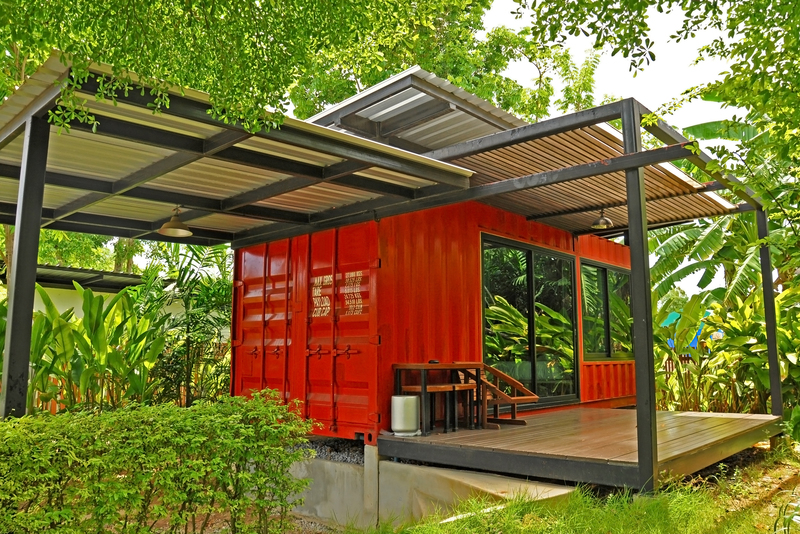
Guide to Creating an Ultra Eco-Conscious Home Environment
With growing awareness about the environmental challenges our planet faces, shifting towards an eco-conscious lifestyle has become more significant than ever. Transforming your home into an ultra eco-friendly space not only benefits the environment but can also promote healthier living. This comprehensive guide explores ways to create a home environment that supports sustainability, reduces waste, and utilizes resources efficiently.
Understanding Eco-Conscious Living
Before diving into changes, it's crucial to understand what eco-conscious living means. At its core, eco-conscious living involves making decisions that are environmentally friendly, socially responsible, and sustainable. This means recognizing the impact of your choices on the planet and striving to reduce your ecological footprint. By adopting practices that use resources wisely, minimize waste, and reduce carbon emissions, you can contribute positively to environmental conservation.
Energy Efficiency: The Core of an Eco-Friendly Home
Switch to Renewable Energy
One of the most significant steps towards creating an eco-friendly home is switching to renewable energy sources. Consider installing solar panels or wind turbines to harness natural energy. These options not only reduce your reliance on fossil fuels but can also lead to significant savings on your energy bills.
Insulate and Seal Your Home
Proper insulation is essential for maintaining energy efficiency. Ensure that your home is well-insulated to prevent heat loss during winter and reduce cooling needs in summer. Seal leaks around windows, doors, and other openings to ensure no energy is wasted.
Invest in Energy-Efficient Appliances
Opt for energy-efficient appliances that have lower energy consumption. Look for the ENERGY STAR label when purchasing appliances like refrigerators, washing machines, and dishwashers. These devices are designed to use less water and electricity, translating into decreased utility bills and a reduced environmental impact.
Reduce, Reuse, Recycle: Minimizing Waste
Adopt a Zero-Waste Lifestyle
Aiming for a zero-waste lifestyle means committing to reducing trash production significantly. Start by analyzing your waste and identifying areas where you can decrease it. Use reusable alternatives such as cloth bags, metal straws, and glass containers to cut down on single-use plastics.
Composting for Sustainable Living
Composting is an effective way to manage organic waste at home. By composting kitchen scraps, yard waste, and other biodegradable materials, you can produce rich, nutritious soil for your garden. This not only reduces the amount of waste going to landfills but also lessens the need for chemical fertilizers.
Recycling and Upcycling
Recycling is a fundamental aspect of an eco-friendly household. Ensure that recyclable materials like paper, glass, and metals are correctly sorted and sent to recycling facilities. Additionally, consider upcycling as a creative way to reuse items. Turn old wooden pallets into furniture or repurpose glass jars as storage containers.
Sustainable Building and Renovation Materials
Opt for Eco-Friendly Building Materials
When renovating or building your home, choose sustainable materials that have a minimal environmental impact. Look for bamboo flooring, recycled steel, or reclaimed wood, which are durable and environmentally friendly. Natural paints and finishes are free from harmful chemicals, promoting healthier indoor air quality.
Water Efficiency in Home Design
Conserving water is a critical part of eco-conscious living. Install low-flow faucets, showerheads, and dual-flush toilets to reduce water consumption significantly. Additionally, consider a rainwater harvesting system to collect and use rainwater for irrigation and other non-potable uses.
Cultivate an Eco-Friendly Indoor Environment
Indoor Plants for Air Purification
Incorporate indoor plants that naturally purify the air by removing toxins and improving air quality. Plants like snake plants, spider plants, and peace lilies not only enhance your home's aesthetic but also offer health benefits by boosting oxygen levels.
Natural Cleaning Products
Conventional cleaning products are laden with chemicals that can harm the environment and your indoor air quality. Switch to natural cleaning alternatives like vinegar, baking soda, and essential oils, which are biodegradable, non-toxic, and just as effective.
Promoting Eco-Conscious Practices Daily
Create an Eco-Friendly Routine
Adopting small, daily habits can make a significant difference in your home's eco-friendliness. Turn off lights when leaving a room, prefer walking or biking for short distances, and be mindful of water and electricity use.
Educate and Involve the Household
Creating an eco-conscious home involves the entire household. Educate family members or roommates about the importance of sustainability, encourage participation in green practices, and make eco-friendly living a household mission.
Conclusion
Creating an ultra eco-friendly home environment is a journey that involves conscious decisions and commitment. By improving energy efficiency, reducing waste, choosing sustainable materials, and adopting eco-friendly daily habits, you can contribute to a healthier planet and enhance your own living space. Remember, every small change adds up, paving the way towards a more sustainable future for everyone.
Start transforming your home today by incorporating these strategies and watch as both your environment and lifestyle become greener, healthier, and more rewarding.
